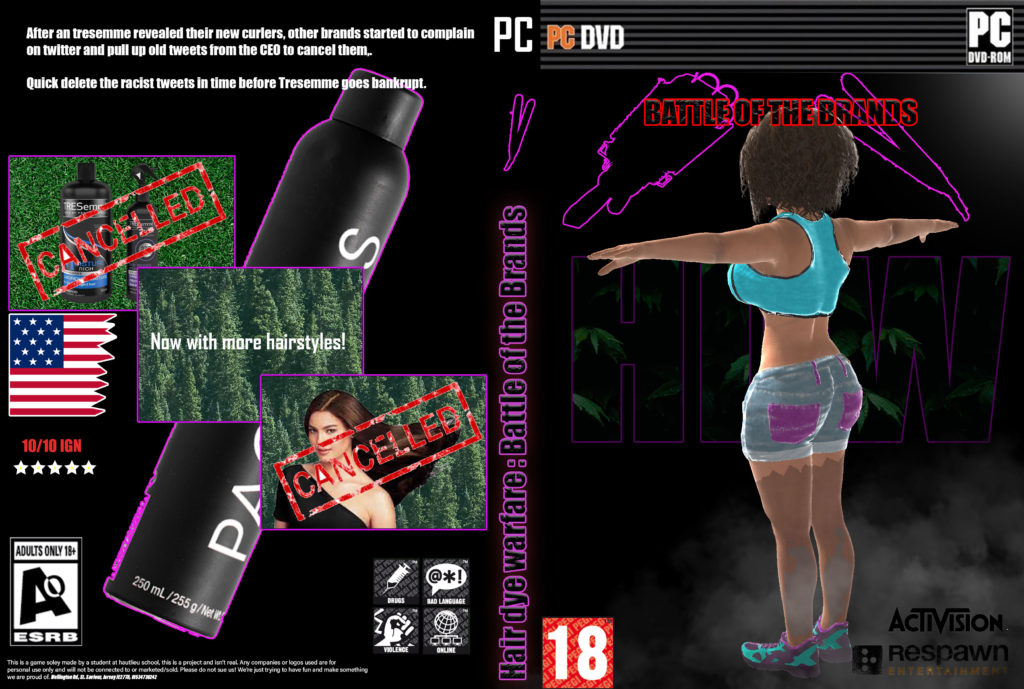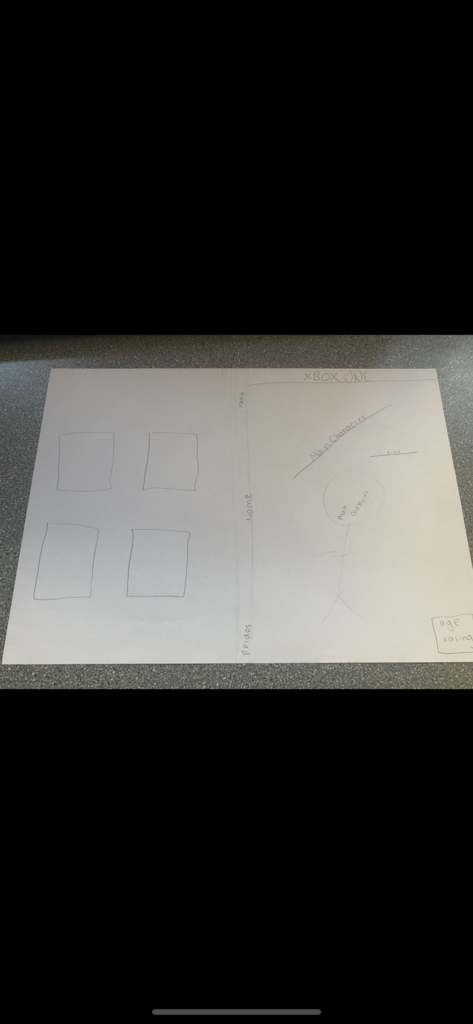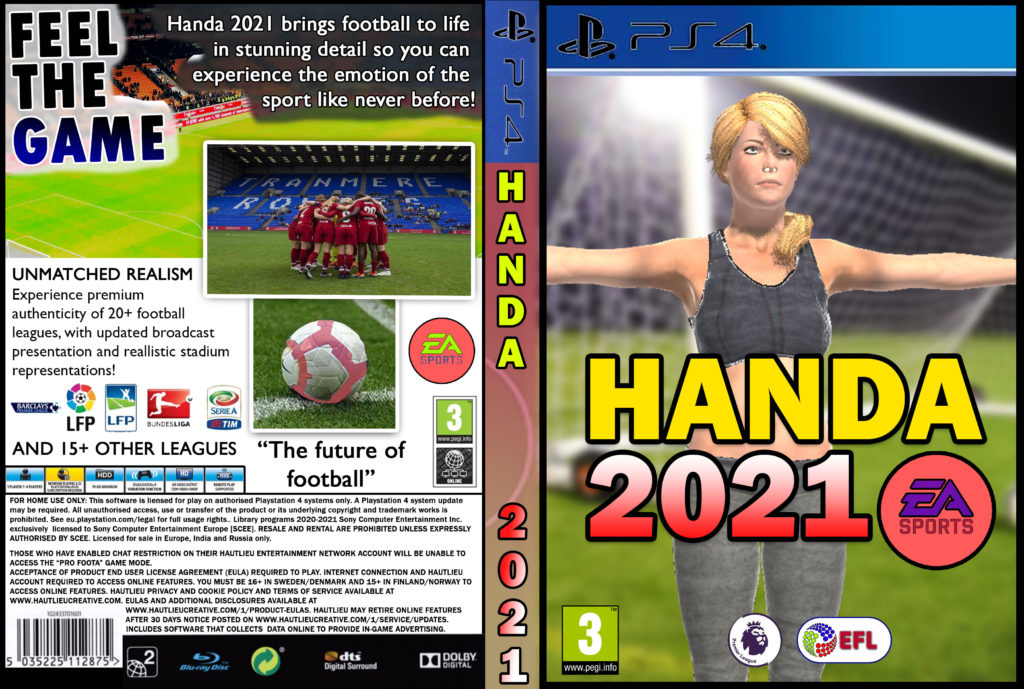
GAME COVER RADICAL



ANALYSE THE RELATIONSHIP BETWEEN SIGNIFIERS AND SIGNIFIEDS IN THE TWO CSP GAMES COVERS:
In this essay I am going to compare the two CSP front covers of Metroid and Tomb Raider using semiotic analysis. I am arguing that both games present their main character to be objectified due to them being female, however both games explore this in different ways. Metroid displayed their character as a masculine strong character which implies that females are less superior than males and Tomb Raider displays their female main character to be oversexualised with poses and body parts.
In the Metroid front game cover the main character “Metroid” is displayed to be a large shouldered, large armed masculine character, however the person controlling the metroid suit is a actually a female character, called Samus, that is unfairly made to be masculine which implies that men are stronger and better at defending themselves than women are, it also implies that the male suit is to defend Samus because she cannot defend herself. In addition to this the character specifically is meant to meet the reactionary belief of what a strong, independent character should be, this is shown to be a male character. The idea of a woman being a main character of a large title video game is a big thing and it gives a good view on the company releasing the game, however there are other ways to go around it to avoid the reactionary, negative stereotype of women being oversexualised. ‘For every forward step however, there is often a reminder of how far is left to travel‘(From an article called “Diversity matters”) – This shows that no matter how much effort or help that a company can put in, there is always more to go, or more to do before people are happy.
Within the Tomb Raider front cover, the character Lara Croft is the dominant signifier and is displayed to be looked at by men. This is called the Male Gaze which is the idea that men look at women as sexual objects. The character Lara Croft can be seen in tight, short cut, shorts that show off the characters behind which fits the presumed straight males voyeurism. Furthermore the character is positioned in a pose that turns her in a way to be able to show off both the characters breasts and back end, this further shows the idea of the Male Gaze displayed within video games and how the character is oversexualised to gain more male attention and achieve more sales. ‘Woman displayed as a sexual-object is the erotic spectacle’ – displays how woman are treated unfairly within the media from Luara Mulvey, this fits with Tomb Raider as the main character is displayed to be looked at.
As well as that, the character Lara Croft is shown to be a strong, independent woman who can fight and defend herself. However Lara Croft can be seen to be in a strappy crop top and a small pair of shorts which specifically show off her curves which are unrealistically curvy and creates an unrealistic expectation for females from the male view which goes along with the idea of a patriarchal society. As Well as this, in other games male characters have full suits of armour that defends the character and doesn’t show off specific parts of the character but when it comes to a woman they don’t need armour and mostly all of their body is shown off. This further displays how the idea of the male gaze is dominant in the video games industry.
In conclusion, both characters from Tomb Raider and Metroid are unfairly treated because of their gender. We can see Samus being represented as the opposite of her gender to display the idea that she cannot defend herself, therefore she needs to be protected by a big suit of armour that looks masiculine on the outside and we can see Lara Croft being oversexualised to fit the male gaze and identify her as a sexual object for the presumed straight male sales and attraction.
IN THIS ESSAY I AM GOING TO APPLY A SEMIOTIC ANALYSIS TO BOTH THE TOMB RAIDER AND METROID VIDEO GAME COVERS. THIS WILL INCLUDE THE ANALYSIS OF THE SYMBOLIC AND REPRESENTATION OF THE GAMES COVERS.
I will argue that the games cover of Metroid and Tomb Raider have different effects towards the gaming community. For example on the cover of Metroid, gamers who have never seen the game will presume that the robotic character is male underneath the suit, however the character is a girl. On the games cover of Tomb Raider viewers can easily tell that the character is a girl and that she is over-sexualised.
On my games cover (Widow), you can easily identify that my character is male due to the appearance and the ‘male like clothing’. In my production there is a clear focus on masculinity which is presented through the character having a muscular body type and being ‘buff’. The clothes used on my character heavily signify about: war, action and aggression which is a typical masculine stereotype. Also, on the back over the cover my character can be seen holding a large sword which also signifies, aggression and fighting. In some ways this links to this quote, “As a girl growing up playing games I was always like, why do I have to play as a boy?” because of the typical masculine stereotype which is thought that “men are natural leaders and woman are natural nurturers” which is presented in many other video games such as Super Mario through the use of the ‘danzel in distress’ , being Princess Peach.
Nevertheless I believe, it has always been expected that men are more aggressive and dangerous than woman who are believed to be ‘innocent’ and safe to be around, which I don’t believe is 100% true.
If you haven’t played the game Metroid you would expect from the games cover that the main character is male due to the stereotype of men being the main protagonist and the fact that they are wearing a robotic, fighting suit. However the main protagonist is a female who is very sexualised when the robotic suit is removed, with her wearing skin tight clothing to easily reveal her butt and her body. This links to a study found by MartinaAngelica which states “Boys believe female characters are treated too often as sex objects” which I strongly agree with. This shows that even men believe that woman in video games are over-sexualised and think that woman should be less sexualised by games companies using clothing on woman to be less tight and less revealing. Summed up, Metroids front cover for the video game can radical as it goes against the patriarchal society.
In the game Tomb Raider (Lara Croft) the main protagonist is clearly visible as a woman but is very over-sexualised even on the main cover of the game with ‘Lara Croft’ wearing skin tight, tiny shorts to reveal her body. “Since Lara Croft blew up gaming culture in 1996 with the first instalment of Tomb Raider, her character has been so predominantly defined by her sex appeal.” As shown in this quote it is clear many viewers believe that Lara Croft is defined and judged through her body and looks that are made from pixels.
/cdn.vox-cdn.com/uploads/chorus_asset/file/10439457/tombraider.gif)
In conclusion I believe game designers and companies need to re-evaluate the way woman and male characters are made in video games to prevent woman being sexualised by hetero-sexual men.

As we close this first half term and move to the next, we can watch some more about Jean Kilbourne to help us engage with her enquiry into the values that are held and communicated about our society (particulary with regard to the representation of gender) from the advertising industry, this link.
We will also look at some Advertising from the 1950’s with an episode of Washes Whiter – this is the episode we looked at in class: https://www.youtube.com/watch?v=0WgprZ8j1fI and below is another episode that you should watch over the half term break.
Going forward, next half term we will look at ADVERTISING in more detail. We will look at 2 more exam case studies (called CSP’s – close study products). We will make some adverts for a cosmetic product. So in preparation please:
MAKE SURE YOU PROVIDE AN ANALYSIS OF 3-5 ADVERTISING STYLE MODELS (it is not the quantity but the quality of your analysis that is important)
– make sure you embed them in your blog as a GALLERY x 5 marks
1. Textual analysis (ie media language x 5 – what elements are in your research products)
2. Semiotic analysis (ie key terms x 5 around semiotics)
3. Representational analysis (key terms x 5 around representation)

Analyse the relationship between signifiers and signified in the two CSP game covers.
In this essay I will be analysing two close study products (CSP) game covers such as Tomb Raider and Metroid to discuss the relation of oversexualised female characters in video games, versus how women are treated and viewed in society.
For example, in the front cover of the well-known video game, Tomb Raider, Lara Croft, the dominant signifier is presented as a sexualised adventurer who is put into dangerous situations regardless of the non-appropriate type of clothing in which she has been designed as. I feel that most games involve sexualising the female characters to attract attention for the presumed average straight masculine player, as well as giving the company and game a significant amount of income and recognition. This can be proven by Samus Aran, the dominant signifier in Metroid being displayed in a manly suit of armour, which demonstrates that women need to be visible in a masculine manner to be able to survive, due to men being seen as the stronger and protective gender. This is a reactionary attitude. Although, behind the vigorous depiction, Samus is presented in a tight clinging blue body suit to show her feminine features such as her curves and other feminine aspects. This can become a dominant view for men to expect women to have larger features, providing more pressure on the presumed average female.
The representation of women in this form can impact men’s visual representation and mental representation of women in society by leading an effect on males to treat and view women as an object. Women are typically viewed as the weaker gender and have a higher percentage of rape or any sexual abuse or harassment in society. The explanation for this could be how men have seen women in video games and even pornography to deliver the belief that women should be treated and seen as what males have experienced on a screen, more of a pleasurable desire and expectation.
Furthermore, the objectification of women is also known as the ‘male gaze’, which has been incorporated by Laura Mulvey in her ‘Visual Pleasure and Narrative Cinema’ notion. The male gaze is the act of depicting women and the world through visual arts and literature from a masculine perspective which represents women as sexual objects to pleasure any heterosexual male viewer. This relates to Tomb Raider and Metroid in which both women have specifically been designed to obtain the attraction and attention of the opposite gender.
Additionally, other theories on the ‘male gaze’ are from Sigmund Freud and Jacques Lacan which interpretate ‘scopophilia’, meaning the pleasure of looking. This is similar to the ‘male gaze’ however the contextual meaning of ‘scopophilia’ proposes the wish for pleasurable looking through a cinematic experience in which someone is considered aesthetically pleasing. The significance of ‘scopophilia’ can be revealed on the front cover of Tomb Raider by the way the camera angle has been set out, for instance the angle of the camera appears to show Laura Crofts behind whereas most dominant male video games, suppress the characters rear end.
In conclusion, I believe society as a whole needs to re-evaluate how designers and companies present women on a daily basis in cinemas, video games and more, to prevent the idea of women being identified as a sexual object to heterosexual men. The two close study products have a negative representation on equality and fairness to women in society by objectifying and sexualising them.

Changes Made:
Replaced male main character with a female one.
Changed game title from Foota 2021 to Handa 2021.
Changed EA SPORTS logo background from white to pink.
Changed spine background colour from green to pink.
Changed accents on image of football from yellow to pink.
Edited one of the screen grabs to show a women’s football stadium.
Changed title gradients to fit a more feminine perspective.
Quotes
“52% of Hispanic people studied believed there was a link between violent video games and real-world violence.”
“This poor representation of Asian women perpetuates the stereotype that they are meek, submissive, sexual objects who exist purely for men’s entertainment.”
“new range of diverse player avatars, complete with wheelchairs, complete with a greater range of skin tones, complete with more expressive gender-agnostic clothing”
“It is isolating not to be thought of or considered in the culture you desperately want to consume and be part of.”
“women then stands in patriarchal couture as signifier for the male other”
“women displayed as a sexual object”
“Euthanised damsel- only solution is to kill damsel in order to protect her”
“Woman in refrigerator- women killed off to continue male story development and seek revenge”
In this essay I am going to apply a semiotic analysis to both the CSP 1 Tomb Raider and CSP 2 Metroid video games covers. In specific the relationship between the signifier and the signified (the thing/ idea being represented and the way the thing/ idea is expressed as a sign.
I will argue that CSP 1 Tomb Raider is both a very violent and highly sexualised which I feel doesn’t represent a female’s capability in a positive or productive way for the gaming world views them. The signifier (the thing being represented) in the game Tomb raider, which is about shooting, is successfully depicted by some of the signified media signs that include: the main dominant signifier and the paradigm of images on the back of the cover. Lara Croft (the main character) is an iconic sign as to what the game will be based around.
Firstly, the way in which the female is depicted on the front cover having tight fitted clothing clinging specifically to her rear emphasising the dominant ideology that women should have a big bum, setting unrealistic expectations (an example of negative stereotyping) right from the beginning, leading women into feeling like they have failed if they don’t appear to be like these figures which are considered desirable and the voyeurism that men will experience at this sight. However, this could also suggest she is less capable and more likely to get in danger due to not being able to protect herself (supported with the way in which she is holding the guns down by her side: not looking ready to battle) and so the reason as to why she might be the main dominant signifier on the front cover is, as shown in the feminist frequency videos about “damsel in distress”. Suggesting that a women’s main purpose in a game is to keep the plot going by the man needing to assist the woman.
Furthermore, in both games covers, CSP 1 Tomb Raider and CSP 2 Metroid, the link between the signifier (being what the game is about) and the signified (being the characters and setting) is very clear. There is use an effective use of bold text for the titles top draw attention to the main media sign of the game (the name of it) especially in the Tomb Raider cover the anchorage between the image and title is very good. The lighting in the background is drawn to the title but also the main image of the woman with guns showing how everything links in together. “Women then stands in patriarchal couture as signifier for the male other” – quote from Why Diversity Matters.
Despite all the negative judgements that can be made about the character in Tomb Raider this aspect of the cover is efficient in showing how a woman has power by the light being focussed on her. It is a good representation of in some way how the world is changing and trying to challenge The Male Gaze view (Laura Mulvey) in which women are objectified and sexualised which can lead to violence as proved in the article about feminism where it states “52% of Hispanic people studied believed there was a link between violent video games and real-world violence.”- Feminist Frequency site. Especially domestic violence which isn’t what the signified was trying to represent from the signifier.
It seems unfair that in CSP 2 Metroid, the dominant signifier is a fantasy male with a muscular build and lots of fighting gear to present how he is very well prepared which agrees with the typical stereotypes of males being strong and independent. This is prejudice because there is still a clear patriarchy which shouldn’t be allowed in this year. To add to the conveying idea there is also a transparent texture on the cover reflecting from the weapons, which indicates additional power and ability to actually work weapons compared to in Tomb Raider where the female is just holding the weapon down next to her thigh not looking as if she will actually know how to use it. But the guy in Metroid is stood in a firm position, strongly clenching on the gun and aiming it a specific point proving he is ready to shoot. Therefore, men are getting more of a supportive community with more recognition. Guantlett believes in the theory that you create your own identity through media inputs which would impact how men feel more forceful and women are shrunk into a smaller and less capable person due to the constructed identity.
Additionally, there is quite a strong use of hegemony in CSP 2 Metroid due to how there is no females to be seen on the front cover (this is an example of selective representation) implying they are significantly less important than the male characters. This could cause the audience of female gamers to have a lower self-esteem because they are influenced into believing they aren’t as worthy and as talented. In contrast this could also been seen as a positive because usually men are less likely to admit to their struggles so it might help them feel better about their selves. “the power of video games [is] a reflective, empowering and emotional influence on the lives of players”-Why diversity matters in the modern video games industry, Guardian, 18 July 2017
In conclusion I strongly believe that none of the games cover (neither Tomb Raider or Metroid) have a positive representation of the relationship between males and females. More specifically the possible dangers in which women can encounter due to the influences that video games try to convey to the user such as sexual violence and disempowering them. These examples from CSP 1 Tomb Raider and CSP 2 Metroid effectively back up the theories by Laura Mulvey about the male gaze and the Guardian’s report on the outstanding impact games have on everyone. I think that all games should try to use more countertypes which would create positive stereotypes giving a more realistic expectation of a group of people whether it be male or female or different races.